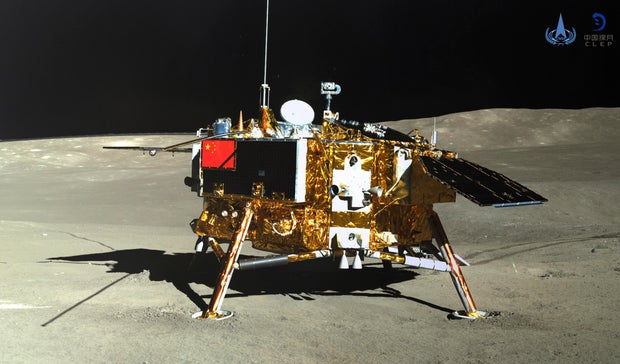China launched a lunar probe on Friday to land on far side of the moon on an unprecedented mission to return with samples that could provide information about the differences between the less explored region and the better-known near side.
It is the latest advancement in China’s increasingly sophisticated space exploration program, which now competes with the United States, still a leader in space.
Free from Earth exposure and other interference, the far side of the Moon is ideal for radio astronomy and other scientific work. Since the other side never faces Earth, a relay satellite is needed to maintain communications.
China also has a three member crew in its own orbiting space station and aims to place astronauts on the Moon by 2030. Three Chinese lunar probe missions are planned for the next four years.
The rocket carrying the Chang’e-6 lunar probe – named after the mythical Chinese moon goddess – took off on Friday at 5:27 pm as planned from the Wenchang launch center in the island province of Hainan.
/ AP
Large numbers of people packed Hainan’s beaches to watch the launch, which comes in the middle of China’s five-day May Day holiday.
After orbiting the Moon to slow down, the lander will separate from the spacecraft and begin collecting samples almost as soon as it lands. It will then reconnect with the returner for the trip back to Earth. The entire mission is expected to last 53 days.
China in 2020 returned samples from the near side of the Moon, the first time anyone had done so since the US Apollo program, which ended in the 1970s. Analysis of the samples found they contained water in small spheres embedded in lunar dirt.
Also last week, three Chinese astronauts returned home after a six month mission on the country’s orbiting space station after the arrival of your replacement crew. The Shenzhou 18 flight to replace the crew was the seventh flown by China mission to your space station and is the fifth since 24 hour staff started in June 2022.
China built its own space station after being excluded from the International Space Station, largely due to US concerns about the Chinese military’s total control of the space program, amid increasing technology competition between the two. geopolitical rivals. US law prohibits almost all cooperation between US and Chinese space programs without explicit congressional approval.
China’s ambitious space program aims to land astronauts on the Moon by 2030, as well as bring back samples from Mars around the same year and launch three lunar probe missions over the next four years. The next one is scheduled for 2027.
Long-term plans call for a permanent manned base on the lunar surface, although they appear to remain in the conceptual phase.
China conducted its first manned space mission in 2003, becoming the third country, after the former Soviet Union and the USA, to put a person in space using its own resources.
The three module Tiangong Space Station, much smaller than the ISS, was launched in 2021 and completed 18 months later. It can accommodate up to six astronauts at the same time and is mainly dedicated to scientific research. The crew will also install space debris protection equipment, perform payload experiments and broadcast science lessons to students on Earth.
China also said it eventually plans to offer access to its space station to foreign astronauts and space tourists. With the ISS approaching the end of its useful life, China could eventually be the only country or company to maintain a manned station in orbit.
It is believed that the US space program still maintains a significant advantage over China’s due to its spending, supply chains and capabilities.
The US aims to put a crew back on the lunar surface by the end of 2025, as part of a renewed commitment to crewed missions, helped by private sector players such as SpaceX and Blue Origin. They plan to land at the Moon’s south pole, where permanently shadowed craters are believed to be filled with frozen water.
NASA and its partners plan to retire the ISS in 2030, remotely piloting it into a destructive re-entry into the atmosphere above the South Pacific Ocean, well away from shipping lanes and populated areas. This will leave Tiangong as the only government-operated space station in low Earth orbit.
China plans to launch its own taikonauts to the Moon starting in 2030, fueling what NASA Administrator Bill Nelson calls a new superpower space race.
“It’s a fact: We’re in a space race,” he told Politico in an interview published last year. “And it’s true that we better be careful that they don’t get to a place on the Moon under the guise of scientific research. And it’s not outside the realm of possibility that they say, ‘stay away, we’re here, this is our territory. .'”
William Harwood contributed to this report.























